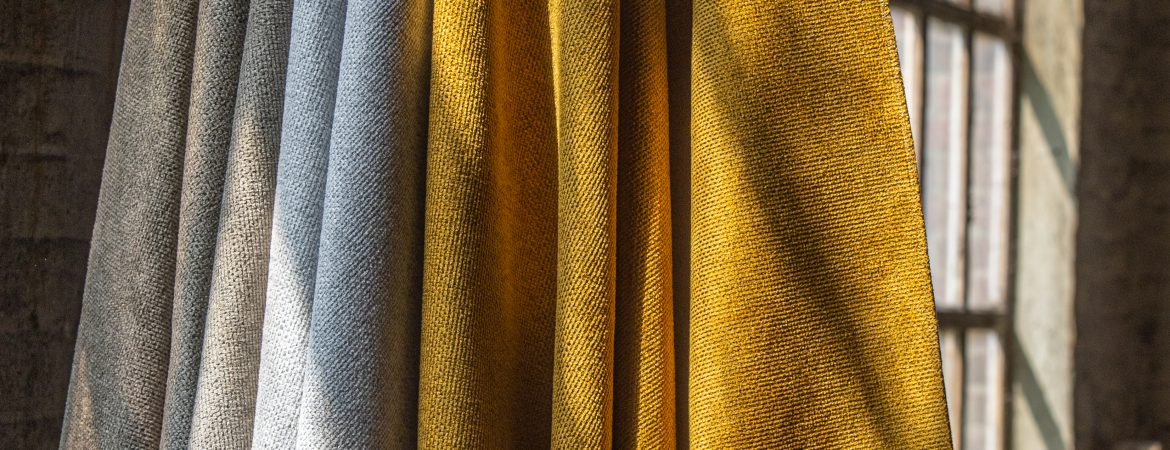
Towards a circular economy: legislation and education in focus
The call for sustainability is growing louder and clearer, and at the heart of this movement towards a greener future is the circular economy. As the world strives for a system of reuse, recycling, and waste minimization, legislation is coming into play to encourage this transition to circularity. Within this changing landscape, the furniture industry stands at a crucial juncture; substantial changes are needed to make sustainability the core of the industry, making it possible to normalize sustainable furniture.
Why circular economy?
A circular economy is a systematic approach where products, materials, and resources are preserved for as long as possible. For the furniture industry, this holds significant value, particularly in positively impacting the sustainability of furniture fabrics. Instead of a linear model of production, consumption, and disposal, a circular economy embraces a closed system where products are designed with reuse, repair, and recycling in mind.
Legislation as a driving force for a circular economy
Governments worldwide recognize the necessity of a circular economy and are beginning to implement legislation to support this transition. Rules and regulations are being introduced, compelling manufacturers to consider the entire lifecycle of their products, from raw materials to the end of their lifespan.
Sustainable fabrics for sustainable furniture
In the world of furniture fabrics, sustainability is no longer just a trend but a necessity. Legislation emphasizes the use of recycled materials, waste minimization, and the promotion of reuse. Manufacturers are encouraged to select materials that can be easily disassembled and recycled. Furthermore, manufacturers are incentivized to embrace design strategies that reduce environmental impact.
The power of (textile) recycling
One component of emerging legislation is the promotion of (textile) recycling. Furniture must be designed with sustainability and easy disassembly in mind, allowing materials to be easily recovered for new applications. This focus on reuse means that furniture fabrics are not only beautiful and comfortable but also have a longer life and contribute less to waste streams. Additionally, they can be recycled differently.
Education and collaboration for circular furniture fabrics to a circular economy
In addition to legislation, education and collaboration play a crucial role in promoting the circular economy in the furniture fabrics industry. Designers, manufacturers, and consumers must collaborate to increase awareness and encourage sustainable choices. Educational initiatives can permeate the entire supply chain, from design studios to the shop floor. Here are some ways to achieve this:
Education and training
Provide training for designers, manufacturers, and other professionals in the furniture fabrics industry to help them understand and apply the principles of circular design.
Supply chain collaboration
Encourage collaboration between different links in the supply chain, such as raw material producers, manufacturers, and distributors, to promote sustainable practices from the beginning to the end product.
Innovation promotion
Support research and development initiatives focused on improving circular methods and materials in the furniture fabrics industry. Innovation can lead to new sustainable solutions.
Certification and standards
Work with certification organizations to establish circular standards for furniture fabrics. Certifications provide guidance on sustainability and help identify circular products.
Awareness campaigns
Launch awareness campaigns targeting designers, manufacturers, and consumers. Illustrative examples and success stories can inspire and show that circular practices are achievable.
Knowledge exchange platforms
Create platforms for knowledge exchange where professionals in the furniture fabrics industry can share experiences and best practices. This can be done through conferences, webinars, and online forums.
Sustainability in educational programs
Integrate sustainability and circular principles into educational programs for designers and professionals in the furniture fabrics industry. This will influence and inspire the next generation.
Consumer engagement
Inform consumers about the benefits of circular furniture fabrics. Transparency in the production chain and information about sustainable choices encourage consumers to make conscious purchasing decisions.
Government policies and incentives
Collaborate with government agencies to promote policies supporting circular practices in the furniture fabrics industry. Incentives such as tax benefits can encourage companies to make sustainable choices.
Through a collective effort of all stakeholders, education and collaboration can be powerful tools in promoting the circular economy in the furniture fabrics industry. The goal is to create a more sustainable, environmentally friendly, and resilient sector. The production of sustainable furniture fabrics is an essential part of this.
Conclusion: towards a sustainable future for furniture fabrics
While legislation paves the way for a circular economy, the key to success lies in the joint efforts of all stakeholders. Interior design plays a crucial role in this changing landscape, with an emphasis on quality, reuse, and ecological responsibility. The future of interior design is not only beautiful and comfortable but also sustainable and circular. It is our collective responsibility to embrace and realize this vision.
Share this newsitem: